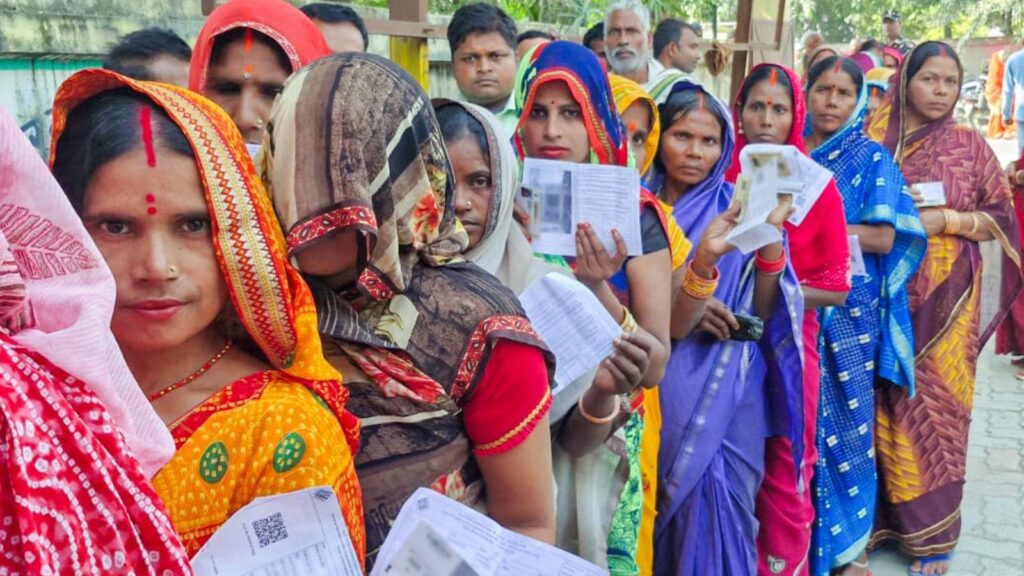At the close of polling on Tuesday in the Bihar Assembly elections, the state not only notched its highest-ever voter turnout, but also saw women set a new record in voting. Against the overall turnout of a record 66.91%, the voting percentage among women voters was 71.6%, as much as 8.8 percentage points more than the 62.8% turnout among men and the largest ever gap.
In terms of absolute numbers too, women appear to have out-voted men in Bihar, which would be a first for the state.
After the Election Commission’s (EC) Special Intensive Revision (SIR) of electoral rolls in the state, which incidentally saw more deletions among women voters than men, Bihar had 3.93 crore men electors and 3.51 women voters – a gap of 42.34 lakh. While the EC has not released data on the absolute number of men and women who voted across the two phases in Bihar, the turnout percentages shared by it indicate that 2.52 crore women voted compared to 2.47 crore men – a difference of 5 lakh.
Women have now out-voted men in all the last five Assembly elections in Bihar, with their turnout rising at a much faster clip than men’s. The phenomenon started in the 2005 polls, when JD(U) leader Nitish Kumar was voted as Chief Minister for the first time.
 Gap between female and male turnout in Bihar Assembly polls
Gap between female and male turnout in Bihar Assembly polls
The 2015 elections, by which time Nitish had earned a loyal base among women due to his government’s schemes, saw the gap between female and male voters in Bihar rise to 7.16 percentage points – it was the highest till this time’s polling.
Incidentally, the 2025 Assembly elections in Bihar are the first polls held after the SIR drive, which began with the state. In the exercise, far more women than men voters got deleted.
While male turnout has also been rising in every election in Bihar since 2005, its figure this time, 62.8%, remains far short of the peak male turnout of 70.71% in 2000. That was the last election held before Jharkhand was carved out of Bihar.
Before 2010, when women turnout exceeded that of men in Bihar for the first time, in every election from 1962 onwards, men out-voted women. The gap, in fact, was as high as 23.17 percentage points in favour of men in 1977. Those were the post-Emergency Assembly elections, when Bihar was at the heart of the political churn.
After 1985, the gap between male and female turnout started shrinking, until women’s turnout overtook men’s in 2005.
In Lok Sabha elections, female turnout in Bihar has risen more slowly, and started exceeding male turnout only in 2014. That year, 57.7% women voters turned out to vote, compared to 54.95% of men, a gap of 2.75%.
 Gap between female and male turnout in Lok Sabha polls
Gap between female and male turnout in Lok Sabha polls
In 2019, the female turnout rose to 59.58%, while the male remained about the same at 54.9%, increasing the gap to 4.68 percentage points.
Last year’s general elections saw the gap increase further, to 6.45 percentage points, when 59.45% women voters turned out to vote, only 53% men did. This is the highest gap on record among women and men voters in general elections for Bihar.
At the national level, there has been very little gap between female turnout and male this time. In 2014, men at 67% turnout were 1.5 percentage points ahead of women at 65.5%. In 2019, women voting saw a boost, and at 67.2% they were 0.18 percentage points ahead of men at 67.02%.
In 2024, this gap grew, but marginally, to 0.25 percentage points, with women’s turnout at 65.8% and men’s at 65.55%.

